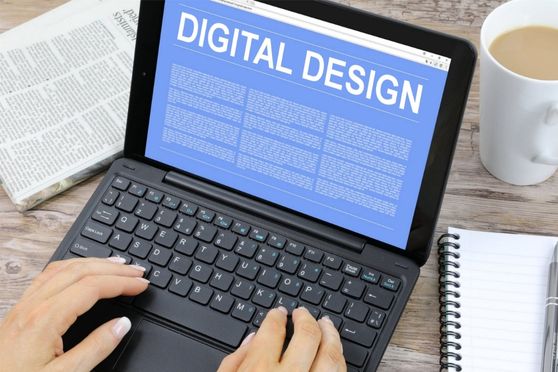What are the advantages of Digital Design as a career in 2023; Finally answered


For the uninitiated, digital refers to its root word, “digits” or fingers. This implies human interaction with a machine. Over the past few decades, the possibilities of human interaction with “digital” interfaces have been re-interpreted several times over. Introduced by thinkers like Don Norman and Edward de Bono, design refers to a mix of art and technology. What made design iterative was the “trying by testing” model used by software engineers in organisations like NASA back in the 60s. Today, we have a multiplicity of digital timelines, with iPad Pros being used in the same room as Zero Generation mobiles, whilst holograms sit alongside digital clocks at our bedside tables.
Simplistically, Digital Design may refer to anything presented to us on a screen. This includes graphic design and UI generation on the basis of cognitive design models and principles. However, the advent of Meta, NFTs and AI technology have made Digital Design even more intuitive, seamless and reality-positive or phygital, customisable and interactive beyond the ordinary haptic feedback interaction.
Graphic and UI/UX designers are riding the current wave whilst insecurities and conspiracy theories abound around job security under the looming shadow of automation (think Lensa or DALL-E2). Meanwhile, with the advent of ecosystems like Meta and products like Neuralink, human consciousness itself is on the precipice of being co-opted into “the mainframe”. Perhaps this change can be embraced instead of shunned, as automation will leave humans free to follow new creative endeavours while their imaginations and communication itself stand to be projected more effectively.

This moment in the industry calls for more immersive learning experiences, community health driven e-platforms and outcomes and interfaces that are sustainable across stakeholders. So how can graphics and communication design ride this wave? The idea is to ensure graphics remain transferable or responsive across changing digital design interfaces, more accessible encoded and more easily retrievable. These principles are applicable for everything, from an ERP system to the feedback of a heartbeat; from a surrealist maximalist poster to the simulation of a game.
The form that digital design will take in the future will depend on where you are, who you are and how you are valued. Meanwhile, the values driving digital design will increasingly keep homing in on accessibility, preventive sustainability and inclusive growth. Governmental bodies especially in countries like India stand to benefit most from Digital Design’s integration with policy making. In India, digital design needs to align with empowerment and possibility as interaction design brings disciplines like UX and community development together.
Digital Design is here to stay because the here and the now is itself in flux. The pandemic and trends like WFH have ensured this in the same way that globalisation & postmodernism laid the foundation. However, when it comes to what Digital Design will mean and how much it will encapsulate remains to be seen in the coming decades of iterative change.
About the author: Jitin Chadha is an educational entrepreneur with a vision to: ∙ Establishing institutions of higher education in India that offer a globally relevant educational experience in design studies and social sciences with pedagogical, curricular and infrastructural innovation at the core of the institutional ethos. As a professional background he is a Founder and Director of Indian Institute of Art and Design –New Delhi ,2014 and also Founder and CEO –AND Academy. He completed his M.Sc. with Distinction in Economics & Finance 2002 - 2003 from University of Warwick, United Kingdom and also completed a Ph.D. Finance 2012 Dept. of Financial Studies, Delhi University, India .